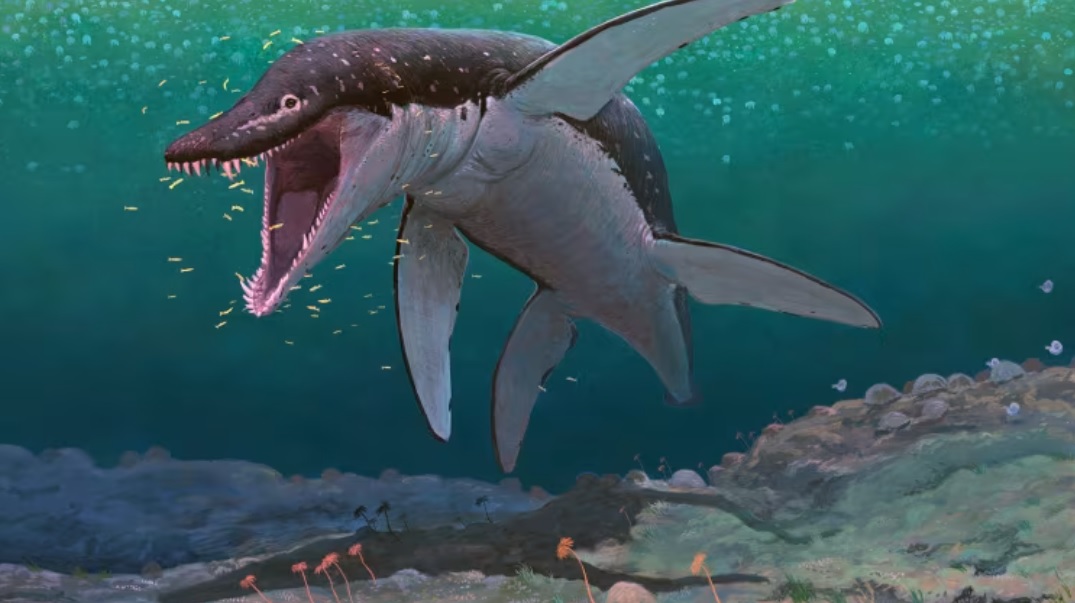Neglected Fossil Find From a Road Project Turns Out to Be a New Sea Creature
Posted on Categories Discover Magazine

Paleontologists analyzed a 170 million-year-old set of fossils collected from a road project in France and found them to belong to a new, massive underwater predator that stands (or swims) as the oldest-known creature of its kind.
A group of local paleontology enthusiasts 40 years ago collected the fossils from a road cutting near Metz in Lorraine, France, and donated them to the Natural History Museum in Luxembourg for safe keeping. The bones remained there until recently, when an international team hailing from Germany, Poland, Luxembourg, and Sweden classified the animal as a Lorrainosaurus, the oldest massive, or “megapredatory,” pliosaur.
Researchers surmise that the new specimen had simply drifted to the ocean’s floor after death, where marine creatures attached to it, leaving marks still visible today. Over time, sediment buried the bones, which fossilized and drifted with the continents to what is now northeastern France.
What Is a Pliosaur?
“Lorrainosaurus was one of the first truly huge pliosaurs,” said Sven Sachs, a researcher at the Natural History Museum in Bielefeld, in a statement. “It gave rise to a dynasty of marine reptile mega-predators that ruled the oceans for around 80 million years.”
As a member of the Thalassophonea (“sea murderers”) family, Lorrainosaurus had a large head capable of crushing prey and a short neck, in contrast with the more famous plesiosaurs, which had long necks. Lorrainosaurus measured about 20 feet in length and paddled using four flipper-like legs, whereas other, larger pliosaurs swam in a similar manner and extended to about 30 feet.
While the Lorrainosaurus fossil preserved no stomach contents, paleontologists have recovered such bounty from the remains of other pliosaurs, including Pliosaurus. These caches have included squid-like creatures, large fish, and other marine reptiles – a sampling of what these creatures ate.
Read More: 5 of the Most Interesting Prehistoric Marine Reptiles
When Did the First Pliosaurs Live?
Scientists believe the first pliosaurs emerged about 200 million years ago in a smaller form and didn’t grow massive and gain a firm footing until the world’s oceans cooled about 175 million years ago. In the ecological shakeup that followed, competing predators such as the fish-like ichthyosaur and ancient marine crocodile relatives suffered while the pliosaur prospered and diversified.
But it took until about 155 million years ago, during the later Jurassic Period, for massive pliosaurs to spread throughout the globe and become ubiquitous. Researchers point to more changes in climate – this time warmer waters – and the extinction of a whale-like reptile predator, the Rhomaleosaur.